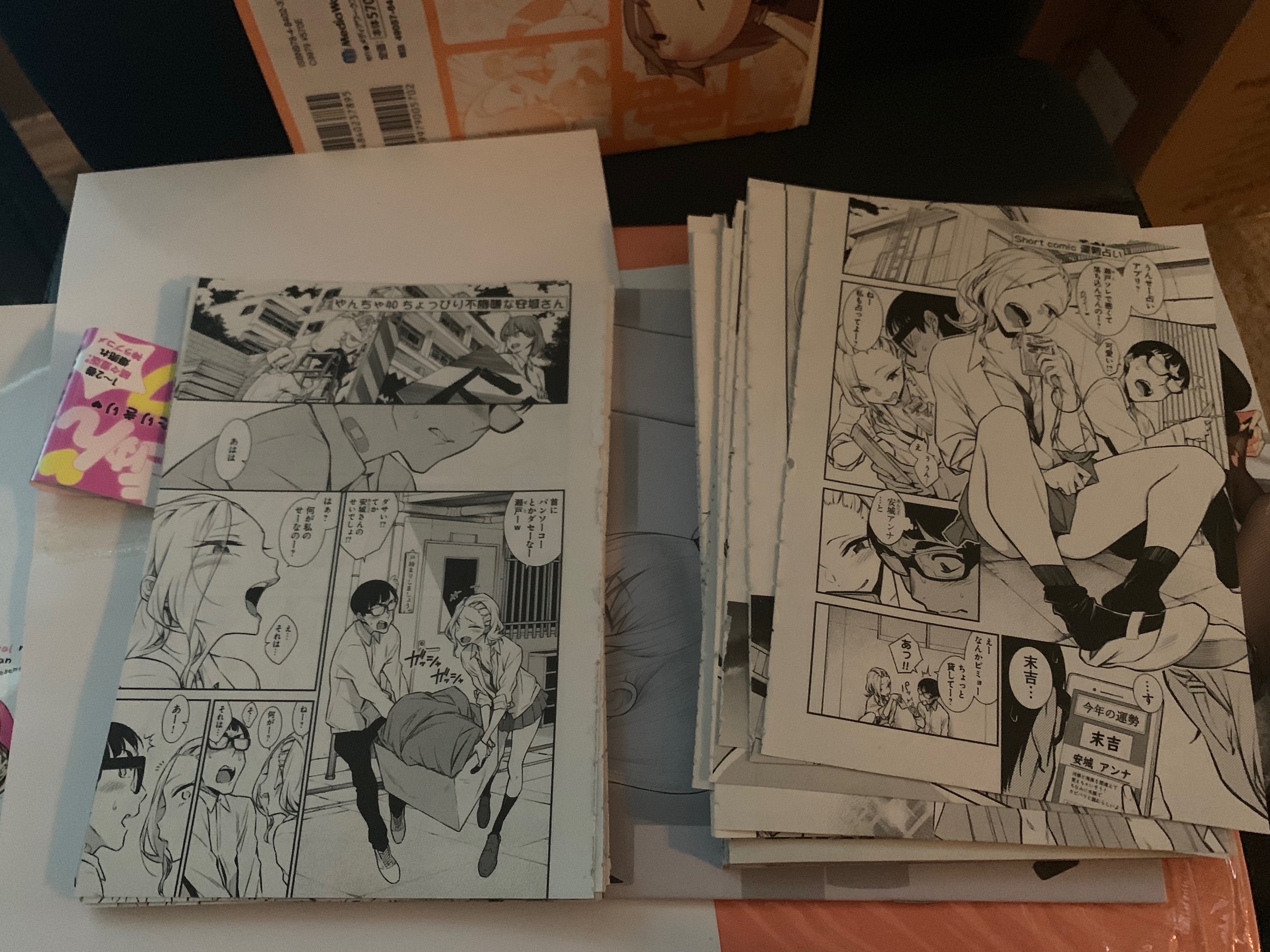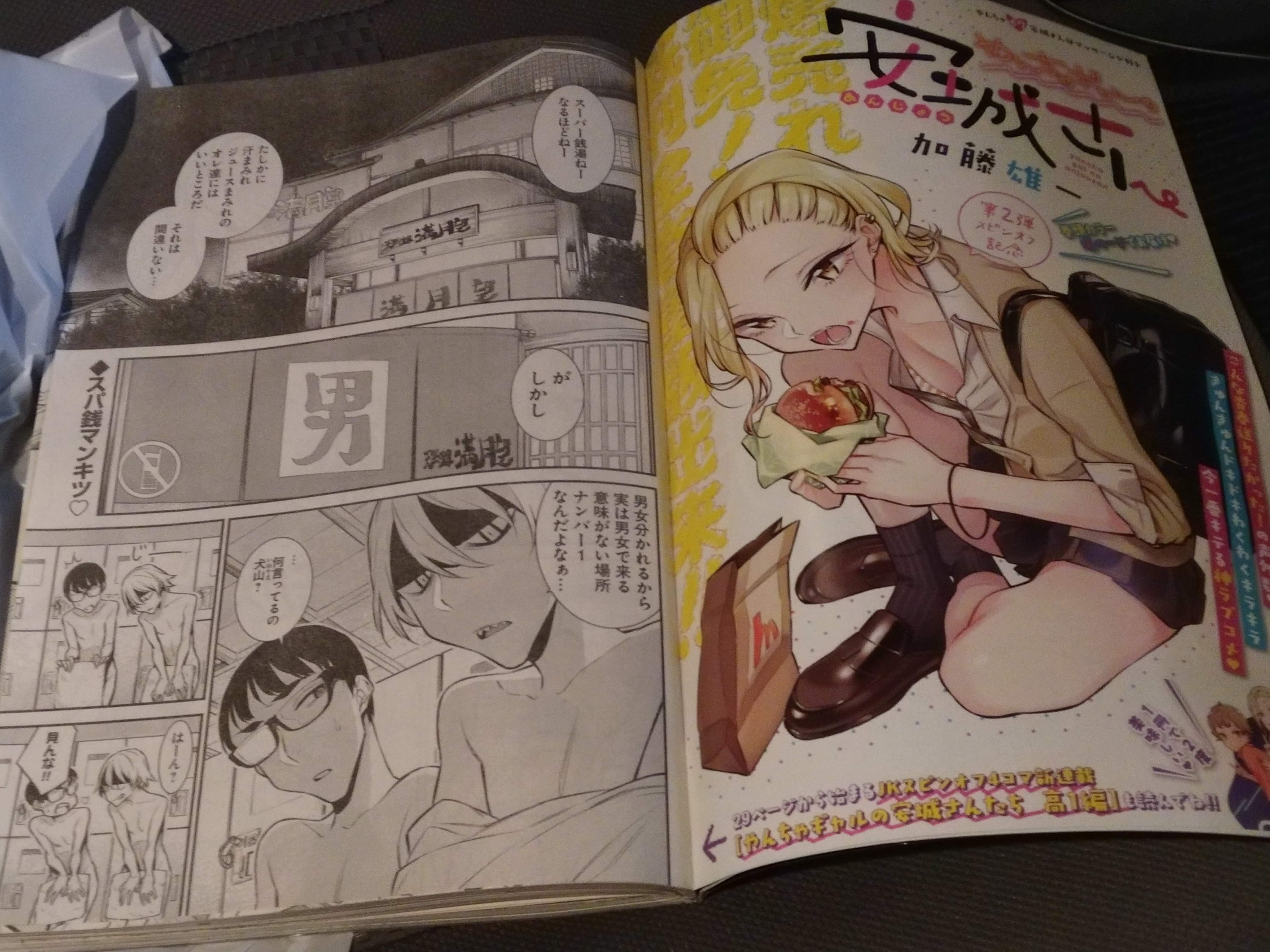You are using an out of date browser. It may not display this or other websites correctly.
You should upgrade or use an alternative browser.
You should upgrade or use an alternative browser.
Yancha Gal no Anjou-san - Vol. 3 Ch. 38 - Anjou-san and the Cultural Festival
- Thread starter MangaDex
- Start date
Group Leader
- Joined
- Aug 29, 2018
- Messages
- 89
Buy the book! https://www.amazon.co.jp/dp/4785963751
Chapter 41 is coming tomorrow; 42 should be a day or so after.
A bunch of chapters are gone from mangadex, so we'll be filling those in over the coming weeks.
Chapter 41 is coming tomorrow; 42 should be a day or so after.
A bunch of chapters are gone from mangadex, so we'll be filling those in over the coming weeks.
- Joined
- Jan 19, 2018
- Messages
- 23
Group Leader
- Joined
- Aug 29, 2018
- Messages
- 89
Actually, Rem said he'd be willing to do TL on the pre-_anq chapters too, so we'll be doing those, as well.
Dex-chan lover
- Joined
- Sep 26, 2018
- Messages
- 641
several groups competing to translate one manga
meanwhile dropped mangas I really liked be like
meanwhile dropped mangas I really liked be like
Group Leader
- Joined
- Jan 18, 2018
- Messages
- 2,215
@monkeyvoodoo Thank you for your work. However, considering your over-the-top holy-than-thou preachiness, I'd like to know if you actually purchase all of the series that you scanlate or if you just freely obtain the raws on the Internet.
Group Leader
- Joined
- Aug 29, 2018
- Messages
- 89
@FredFriendly We always purchase the books we work on. It's really not a big expense, either. Anjou volume 3 from amazon.co.jp was ¥535 + ¥950 express shipping. Total of USD$13.88 at time of purchase, to have the book arrive at my doorstep three days later.
This is why we always push for readers to just buy the Japanese books. It's not expensive to support the author. Better than e.g. monthly Patreon support for chapters every few weeks. And, importantly, sales of the books in Japan directly contribute to the author being able to continue the series, possible future foreign-language licenses, and even anime adaptations.
This is why we always push for readers to just buy the Japanese books. It's not expensive to support the author. Better than e.g. monthly Patreon support for chapters every few weeks. And, importantly, sales of the books in Japan directly contribute to the author being able to continue the series, possible future foreign-language licenses, and even anime adaptations.
- Joined
- May 29, 2012
- Messages
- 594
Dex-chan lover
- Joined
- Sep 10, 2018
- Messages
- 4,152
based unlimited salt works
Group Leader
- Joined
- Aug 29, 2018
- Messages
- 89
@FredFriendly since you asked:

We're also serious enough about this that we're picking up YK as they publish:


We're also serious enough about this that we're picking up YK as they publish:

Dex-chan lover
- Joined
- Jun 17, 2018
- Messages
- 3,319
@monkeyvoodoo
On page page 7-8 Hatigarm typesetted some of the signs, and painted two white (couldn't translate?), but you didn't. Do you not plan to typeset as meticulously as they did?
On page page 7-8 Hatigarm typesetted some of the signs, and painted two white (couldn't translate?), but you didn't. Do you not plan to typeset as meticulously as they did?
Fed-Kun's army
- Joined
- Jun 8, 2018
- Messages
- 786
@monkeyvoodoo real serious when im asking this no troll intended...did u snipe this series?
Group Leader
- Joined
- Aug 29, 2018
- Messages
- 89
@HYBRID_BEING our policy for signs and onomatopoeia is simply just to leave them be. the only times we translate those are when it's relevant to the plot (i.e. without it being translated, the reader would be left confused). specifically for onomatopoeia, japanese has what amounts to an entire language. while it's possible to translate these (to a degree), often there's no direct translation, so you end up with some weird string of kana, with some form of somewhat-relevant english slapped on top of it. usually, the original japanese onomatopoeia serves its own purpose without translation: e.g. you can see something happening in the panel, and there's japanese fx text that you don't need a translation for to understand, contextually.
i think the blank spots you're referring to were cleaned by the staff cleaning the chapter, but weren't addressed by the translator, partially for the reasons i stated above, and partially to get the chapter out as quick as possible. i don't think it's a matter of being unable to translate. onomatopoeia in japanese is just particularly complex, often so much so that a native speaker would, rather than try to translate, just tell you "it's just a noise that means XYZ".
i think the blank spots you're referring to were cleaned by the staff cleaning the chapter, but weren't addressed by the translator, partially for the reasons i stated above, and partially to get the chapter out as quick as possible. i don't think it's a matter of being unable to translate. onomatopoeia in japanese is just particularly complex, often so much so that a native speaker would, rather than try to translate, just tell you "it's just a noise that means XYZ".
Group Leader
- Joined
- Aug 29, 2018
- Messages
- 89
@krispy sure, there's really no way around saying that we sniped this series. but there's a lot more to answer with your question than can really be addressed here in a quick comment. this could have been any series; we've been annoyed by donation-begging groups for a long time. ultimately, this came down to a weird coincidence of timing, and interest in a particular series. there was no particular effort in singling out a series or group.
Group Leader
- Joined
- Aug 29, 2018
- Messages
- 89
@monkeyvoodoo Point out something I'm unhappy about and you'll be happy to correct it. I'm unhappy that you sniped a series that was already being done well. Begging for donations triggers you? There are hundreds of groups who do this. This is a hobby. Not everyone has the expendable income to do this for free, even if you can get it cheap. Instead of actually picking up a series that had been dropped or needed to be translated, you shoved your way in with an inferior quality product while slapping on shitposting about another group.
You want to make me happy? You want to correct this situation? Stop sniping shit and get the original scanlators to come back. I don't care what the fuck annoys you, YOU annoy me by being assholes.
You want to make me happy? You want to correct this situation? Stop sniping shit and get the original scanlators to come back. I don't care what the fuck annoys you, YOU annoy me by being assholes.
Similar threads
- 2
- Replies
- 75
- Views
- 2
- Replies
- 668
- Views
- 60
- Replies
- 3K
- Views
Users who are viewing this thread
Total: 2 (members: 0, guests: 2)